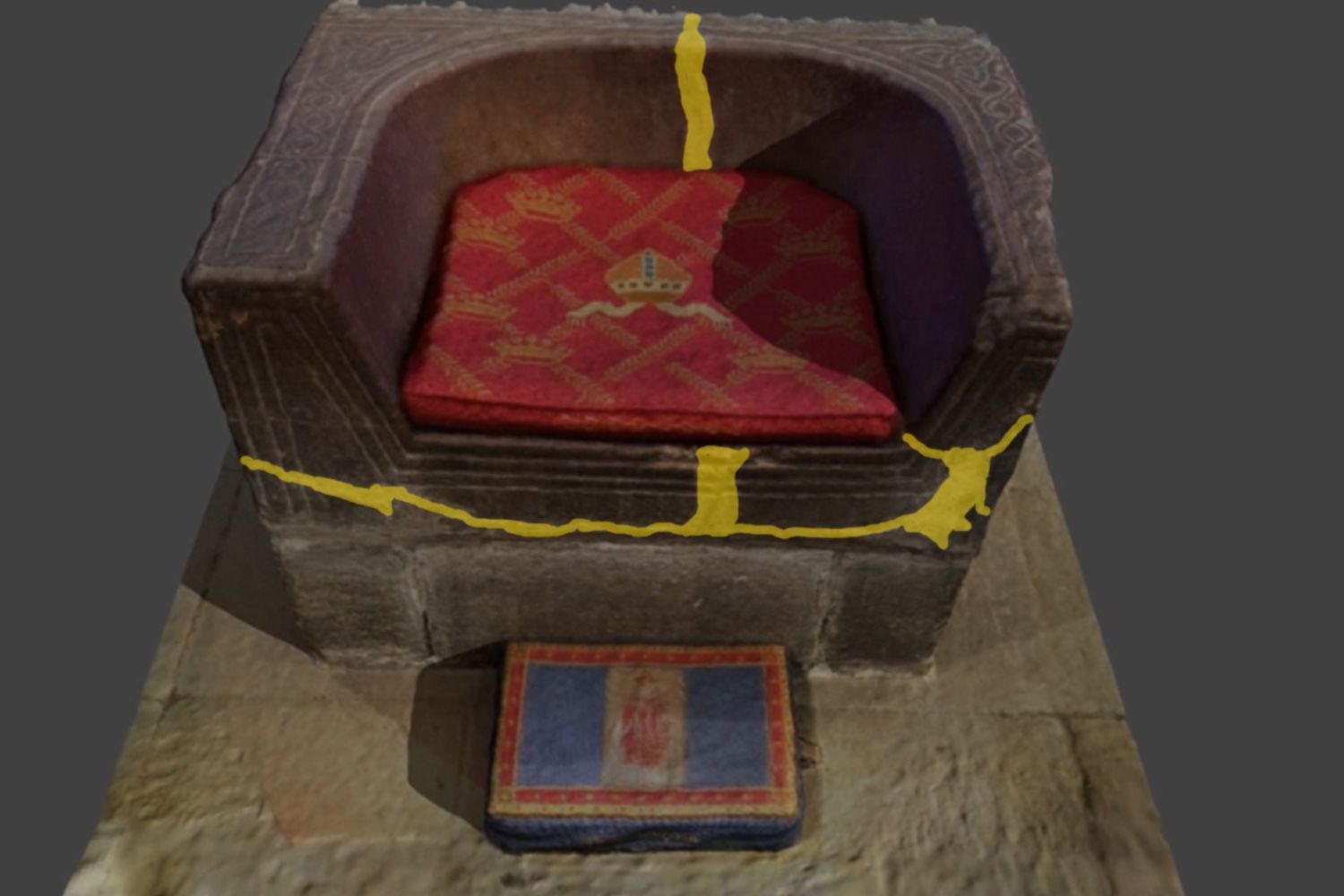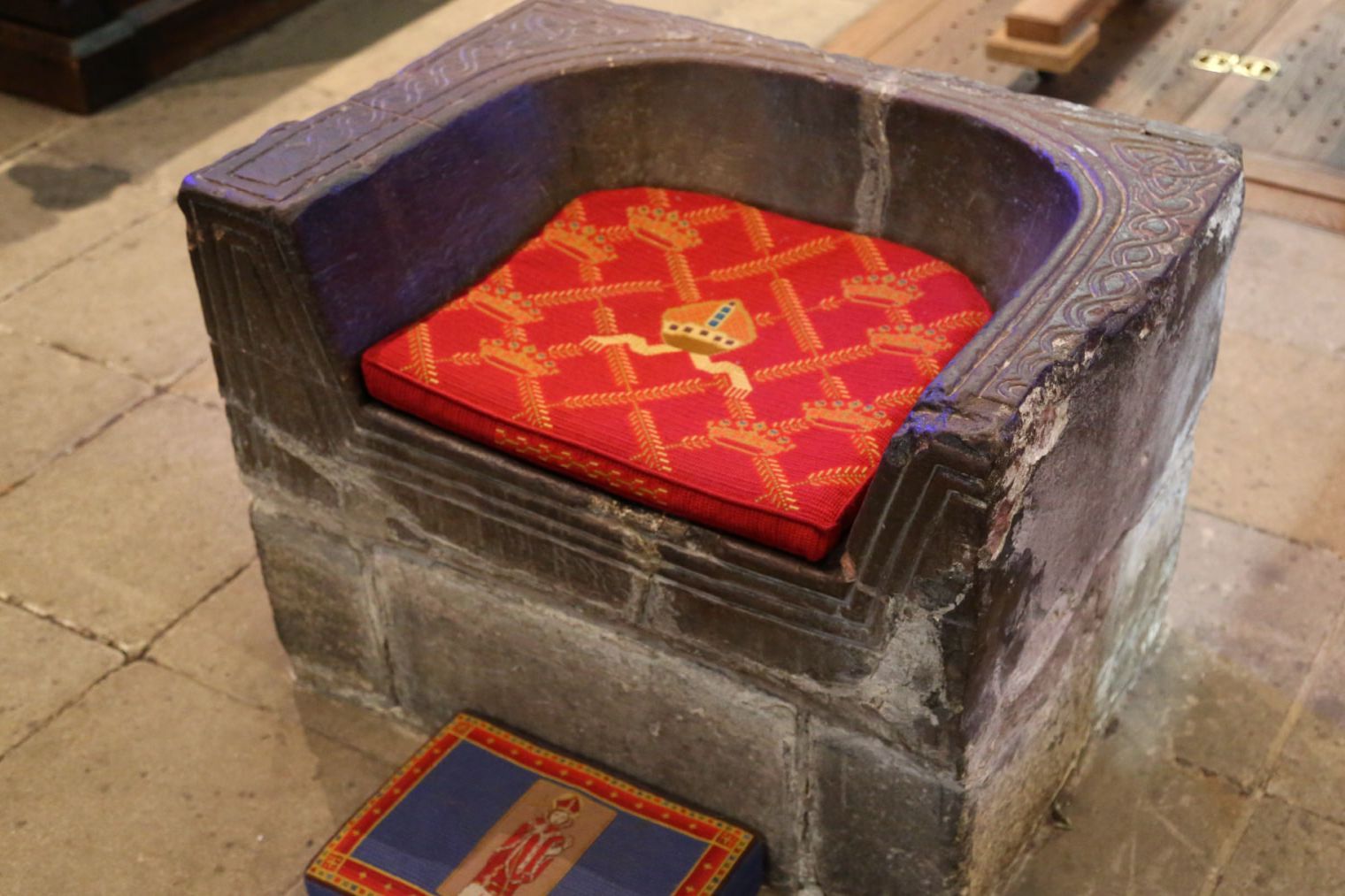I wish they’d had smartphones, because footage of the incident would have immediately gone viral. The evidence, however, is plain enough to see.
The sound must have been deafening when the dead weight of medieval, beautifully carved stone smashed against the flags of Hexham Abbey floor. And I can perfectly imagine, with an empathy at a fellow human’s horrifying mistake, their stomach-sickening fear when those Victorian workers realised what they’d done: they’d dropped the Frith Stool – one of Hexham Abbey’s rarest relics – and smashed it into pieces.
Here’s a 3D model of the Frith Stool – drag your mouse/finger and spin it around. At least the Victorians can’t destroy this one:
At least, I hope that’s what they felt; not from some nostalgic schadenfreude but because I hope they actually cared. You see, the Victorians weren’t always known for caring about heritage; or at least, their view of caring was very different to ours and usually involved moving, meddling, redesigning and damaging. While they created many fantastic buildings, from London’s Euston Arch to the Natural History Museum, they also merrily destroyed a lot of historically important artefacts, from pulling the painted medieval plaster off churches (the paintings were often whitewashed over in the Reformation but, rather than restore them by removing the whitewash like conservationists might today, the Victorians just ripped the whole lot off, certain in their knowledge that the exposed stone looked ever-so-much better), to ripping down vast tracts of London in order to dig out the new Tube lines in the days before boring equipment.
And so it was with Hexham Abbey’s Frith Stool. The Frith Stool – sometimes called the Bishop’s Seat – dates from the earliest days of Hexham Abbey and may even have been commissioned by the abbey’s first Bishop, Bishop Wilfrid, when the first monastery was begun in 674. Across Europe, bishops’ seats were where they’d park their posteriors while they presided over church matters. Frith is an Anglo Saxon word means ‘peace’ or ‘security’, and this reveals the Frith Stool’s other use: fugitives could seek sanctuary in churches and the Frith Stool was seen as the central, safest point to reach.

All of which adds up to a pretty impressive piece of heritage. While it doesn’t have the wow factor, beauty or grandeur of many more celebrated historical pieces, the Frith Stool more than makes up for it in its age, its symbolism, and its solidity.
Solidity up to a point. In the 19th Century, the powers that be decided the Frith Stool was better off in a different spot and set about relocating it. I can only imagine the faces of those tasked with the Herculean mission of finding a way to lug a lump of stone around the abbey, but despite what we can assume were their best efforts, they managed to drop it. In the battle between floor and Frith Stool, the Frith Stool came off worse, and broke into several still clearly visible pieces.
To make matters worse, they then stuck it back together again with cement. What else would a caring conservationist use?
